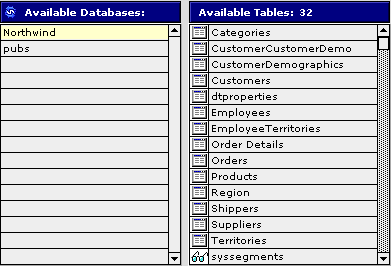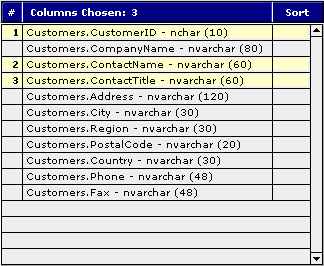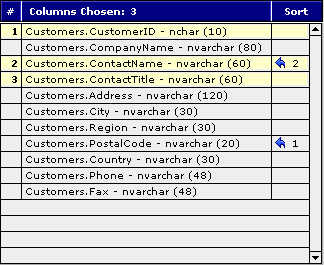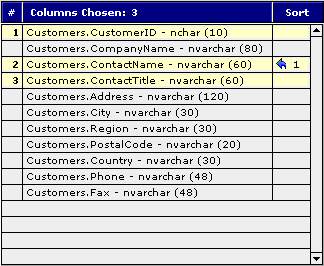- Choose
a table from the list of databases:

If
you do not see any databases listed, click the  icon ("Refresh") to refresh the list. NOTE: You
can refresh the list of databases at any time by clicking the refresh
button (
icon ("Refresh") to refresh the list. NOTE: You
can refresh the list of databases at any time by clicking the refresh
button ( )
)
Once
you choose the database, you'll see a listing of all the tables
within the database you've chosen:
 .
.
Depending
on the preferences you've chosen, you will see both tables (indicated
by the icon) and views (indicated by the icon).
When
you click on a table (or view), you will see the columns in that
table (or view):

You
can choose up to 25 columns (total, included related
columns) to be included in your query. Remember, in SQL the
order in which you choose the columns is the order in which the
data will appear in your report. The column order in the query
will appear to the left of the name in the column marked "#".

To
remove a column from your query, simple re-select the column name.

You
can sort your report by ANY column - you DO NOT have
to include the column in your query in order to sort your report
by that column. Like the columns order, the order in which you
choose the sort column will determine how your report data will
be sorted. When you select a column for sorting, you will see
an icon next to the column, as well as its sort order:

To
remove a sort column from your query, simple re-select the column
name. The sort order will change automatically:

As
you add (or remove) columns from your query or add (or remove) sort
columns, the SQL statement below the list of databases, tables and
columns will update automatically based on your selections.
Once
you've selected all of your columns, (optionally) indicated the
sort order, named the query and chosen whether or not to protect
the query, you can then click the button to save your query and
execute the report.